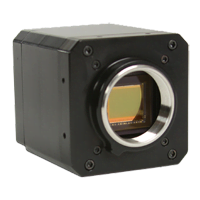

These corridors are vital for the safe passage of Indian wildlife to travel within their range looking for food and mates. WLT works with partner Wildlife Trust of India to secure important areas of land which connect protected areas and national parks. The 252,000 acres (more than 100,000 hectares) protected by WLT’s partner Programme for Belize is home to 390 species of bird, 200 species of tree and 70 species of mammal, including the Puma (pictured), as well as Jaguar, Ocelot and Margay. The constant threats to the Rio Bravo’s rich tropical forests include hunting, illegal logging and wildfires. Puma, Rio Bravo Conservation and Management Area, Belize As well as rare bird species, the Beni Savanna in northern Bolivia is also an important habitat for large mammals such as the Ocelot (pictured), Jaguar, Puma and Maned Wolf. As one of the reserve’s main functions is to provide passage for several wild cat species (others include Puma and Ocelot), photographs such as the above of a Jaguar are important indicators that El Pantanoso (which is currently being supported by WLT’s Buy an Acre, Argentina fund) is thriving.īarba Azul Reserve is known for being a birding hotspot and is currently the focus of WLT’s appeal for the Critically Endangered Blue-throated Macaw. This technology has become incredibly useful to conservationists for monitoring elusive and nocturnal species such as the charismatic cat species reserves are aiming to protect. World Land Trust (WLT) has collated some of the valuable images sent from our Keepers of the Wild captured by trail cameras.Įl Pantanoso Reserve in northern Argentina, provides an important corridor for wildlife movement between Argentina and Bolivia and is part of the largest continuous habitat for Jaguar in Argentina. You would also be able to see the nocturnal traffic of the trail on the path in front of you by noting the tracks and scent marks left by mammals such as tapirs, peccaries, deer, and if you were lucky, a spectacular wild cat.Īs tracks can easily be lost before a ranger’s patrol, these wildlife surveys are aided by camera traps, hidden trail cameras left out on the most heavily traversed paths, often leading to water. Seeing it through the ranger’s eyes, you could keep track of the bird species nesting and feeding in the trees, see the abundance of insects in the undergrowth, hear the frogs chirping from their hidden homes. Hi Richard, thank you for your feedback ! Your suggestions will be forwarded to our dev team.If you were to follow a ranger’s footsteps around a reserve, you would see a wealth of the habitat’s diversity flying, rustling and crawling around you. Unfortunately, all this app did is remind me that I live under a light dome. Other than those little issues the Nocturne app seems it might do what it promises, which is give you a nice starry landscape shot from a dark sky area. They should have made it a scrolling window. A rookie programming mistake, thinking everyone’s screen size and font are the same as yours. I had to reduce my font size to read it, then resume my previous setting. I could not scroll to the bottom of the Tip screen. It would be nice to be able to change the zoom level even a limited amount.
#Nocturn camera pro#
In addition, I am unable to take advantage of the 0.5x and 2x zoom options the camera app on my 11 Pro allows.
#Nocturn camera Bluetooth#
My bluetooth remote only works with the iPhone camera app, not with Nocturne. A time delayed start might be the answer to all of this. In addition, with the phone tilted toward the sky, that start button is hard to get to.

Perhaps more than just the first, depending on the stability of your tripod. That means my first tap on the screen shakes the phone while it is taking the first image. There is no provision for a remote control.


 0 kommentar(er)
0 kommentar(er)
